
BUILDING CAPACITY TO MANAGE RISKS AND ENHANCE RESILIENCE A Guidebook for Ports
The guidebook presents a step-by-step approach to resilience building in the maritime supply chain. It sets out risk identification, assessment and management tools and techniques, and describes a resilience-building process for ports.
The guidebook emphasizes lessons learned and good practices and highlights relevant measures that can be implemented to prepare, respond and recover from disruptions.

Resilient Maritime Logistics Website
The Resilient Maritime Logistics website (https://resilientmaritimelogistics.unctad.org) hosts a guidebook for ports aiming at Building Capacity to Manage Risks and Enhance Resilience. It features risk identification, assessment, and management tools and approaches, case studies, good practices and a step-by-step resilience-building process for ports and other relevant maritime supply chain actors. The guidance focuses on three types of resilience-building actions and measures, namely:
- Before a disruption materializes.
- During a disruption.
- After a disruption.
A course structured around six modules and focusing on Port and Maritime Supply Chain Resilience accompanies the guidance on this website. The training will help to better understand the importance of well-functioning maritime supply chains and ports for highly interdependent world economies and the need to build their resilience in the face of heightened, uncertainty and disruptions.
The Resilient Maritime Logistics website and related content and material aim to help stakeholders across the maritime supply chain to better manage risks, prepare in the face of disruptions, ensure effective response measures and enable rapid recovery. Targeted stakeholders include (i) governmental planning and regulatory agencies; (ii) port authorities; (iii) port operators and port management companies; (iv) terminal operators; (v) infrastructure managers; (vi) freight forwarders; (vii) customs authorities; (viii) carriers and shipping companies; (ix) shippers and cargo owners; and (x) inland carriers and inland logistics operators (e.g. dry ports, inland container depots, warehouses, logistics and distribution centres). Collaboration between each of these stakeholders is critical for maritime supply chain agility and resilience-building.
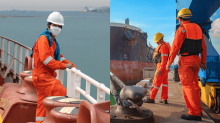
UNCTAD course on ports and maritime supply chain resilience
UNCTAD's course on Ports and Maritime Supply Chain Resilience aims to help improve understanding of the key issues at the interface of maritime transport and resilience-building. With disruptions to transport and logistics occurring more frequently, it is crucial to build the capacity to anticipate, prepare, respond, and recover from risks and events disrupting the maritime supply chain.
The training will allow participants to:
- Gain a general overview of the maritime supply chain and improve awareness of its strategic role in trade and development.
- Understand the risks and disruptions facing the maritime supply chain, and their potential implications.
- Become familiar with risk management and resilience concepts and learn what actions are required to better prepare and anticipate disruptions, manage risks, respond to disruptive events, and recover.
- Develop the capacity to plan for emergency responses and to integrate risk management into relevant processes and plans.
- Learn from others and their experiences and get acquainted with existing tools and instruments that can help manage risks and build resilience.
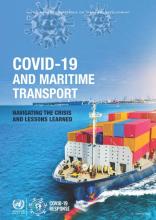
COVID-19 and Maritime Trasport: Navigating the Crisis and Lessons Learned
UNCTAD's report "Covid-19 and maritime transport: Navigating the crisis and lessons learned" describes how the COVID-19 pandemic shocked the global maritime transport system and some of the key effects on the sector. It highlights challenges arising from the disruption across ports and hinterland connections and examines response and mitigation measures implemented by various stakeholders. It sets out the key lessons that can inform and guide preparedness and resilience-building efforts in transport and logistics.
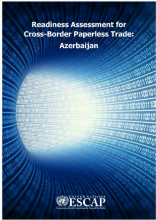
Readiness Assessment for Cross-Border Paperless Trade: Azerbaijan
This report provides an assessment of the Republic of Azerbaijan’s readiness for cross-border paperless trade, i.e., the conduct of international trade on the basis of electronic data and documents. Following a brief review of the state of play in trade facilitation implementation in the Republic of Azerbaijan, findings from the technical and legal readiness assessments for cross-border paperless trade are presented. Recommendations on both technical and legal aspects of cross-border paperless trade are then provided, followed by an initial action plan for the Republic of Azerbaijan to move forward.
The complete set of Cross-Border Paperless Trade Readiness Assessment reports can be accessed here.
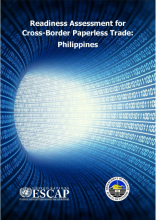
Readiness Assessment for Cross-Border Paperless Trade: Philippines
This report provides an assessment of the Philippines’ readiness for cross-border paperless trade, i.e., the conduct of international trade based on electronic data and documents.
A team of experts conducted this assessment following readiness checklists developed by the ESCAP Interim Intergovernmental Steering Group on Cross-Border Paperless Trade Facilitation, of which the Philippines is a member. National consultation on facilitating cross-border paperless trade was co-organized by the Philippine Bureau of Customs (BOC) and ESCAP on 8 March 2021, when preliminary findings from the visits and interviews were further reviewed, consolidated and validated.
The report is co-published by ESCAP and the Philippine Bureau of Customs (BOC).
The complete set of Cross-Border Paperless Trade Readiness Assessment reports can be accessed here.
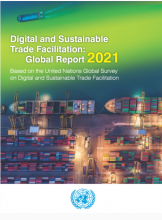
Digital and Sustainable Trade Facilitation: Global Report 2021
This report reviews the progress of trade facilitation reforms across 144 countries, based on the fourth UN Global Survey on Digital and Sustainable Trade Facilitation. The analysis is based on 58 trade facilitation measures that are classified into four groups (General Trade Facilitation, Digital Trade Facilitation, Sustainable Trade Facilitation and Other Trade Facilitation) covering both binding and non-binding WTO TFA measures, as well as measures beyond the scope of WTO TFA. The report aims at enabling countries and development partners to take a forward-looking approach to trade facilitation, better understand and monitor progress, support evidence-based public policies, share best practices, and identify emerging capacity-building and technical assistance needs.
For more information on the UN Global Survey on Digital and Sustainable Trade Facilitation and other reports, please visit untfsurvey.org
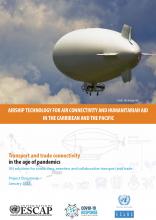
Airship Technology for Air Connectivity and Humanitarian and the Caribbean and the Pacific
The Airship transport alternative, in its diverse engineering variants, has the potential to be a game-changing technology with significant development in recent years. It offers the technical capabilities to make a broad contribution to the optimization of mobility and logistics networks in isolated communities and territories, especially but not only in Small Island Developing States (SIDS). This is particularly important in the context of the ongoing COVID-19 pandemic, as in the event of a disaster, different aid agencies are deployed with support in the distribution and logistics of perishable and essential cargo, equipment, and assistance personnel. This innovative mode should be incorporated into the transport matrix (both nationally and regionally), for the latter to move towards more efficient, sustainable, and resilient networks.
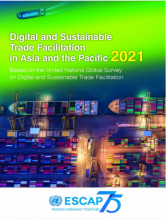
Digital and Sustainable Trade Facilitation in Asia and the Pacific 2021
The regional report is part of a global survey effort on the implementation of trade facilitation and paperless trade measures, undertaken jointly by the five United Nations Regional Commissions for Africa (ECA), Europe (ECE), Asia and the Pacific (ESCAP), Latin America and the Caribbean (ECLAC) and West Asia (ESCWA).
Based on the 2021 United Nations Global Survey on Digital and Sustainable Trade Facilitation covering 46 countries of the Asia-Pacific region, this report reviews the progress of trade facilitation reforms and provides a detailed analysis based on 58 trade facilitation measures that are classified into four groups (“General Trade Facilitation”, “Digital Trade Facilitation”, “Sustainable Trade Facilitation” and “Other Trade Facilitation”) and a further 11 sub-groups covering both binding and non-binding WTO TFA measures, and measures beyond the scope of WTO TFA+.
The fourth survey is built upon the earlier surveys and expanded collection of measures on trade finance facilitation as well as on trade facilitation in times of crisis. The latter was incorporated in order to gather information on the implementation of short-term measures in response to the COVID-19 pandemic as well as long-term measures in preparation for future crises and pandemics. The crucial role of trade digitalization has been emphasized not only for increasing regulatory compliance and reducing illicit financial flows, but also as an effective method to mitigate trade disruptions during the COVID-19 pandemic. The fourth survey also continues to pay special attention to sectors and groups with special needs, such as the agricultural sector, small and medium-sized enterprises (SMEs) and women traders, at the outset of the Agenda 2030 for Sustainable Development’s recognition of international trade as one of the key means of implementation of the Sustainable Development Goals.
The report could further support the economies around the region in order to make trade simpler, cheaper, more resilient and sustainable through the use and application of technology and innovation in international trade procedures.
For more information on the UN Global Survey on Digital and Sustainable Trade Facilitation and other reports, please visit untfsurvey.org
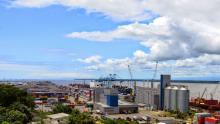
COVID-19 and maritime transport: Disruption and resilience in Africa
Impacts of the COVID-19 disruption on maritime trade flows, port calls, and liner shipping connectivity in Africa.